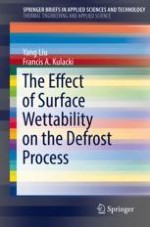2019 | OriginalPaper | Buchkapitel
3. A Model of the Defrost Process
verfasst von : Yang Liu, Francis A. Kulacki
Erschienen in: The Effect of Surface Wettability on the Defrost Process
Aktivieren Sie unsere intelligente Suche, um passende Fachinhalte oder Patente zu finden.
Wählen Sie Textabschnitte aus um mit Künstlicher Intelligenz passenden Patente zu finden. powered by
Markieren Sie Textabschnitte, um KI-gestützt weitere passende Inhalte zu finden. powered by
